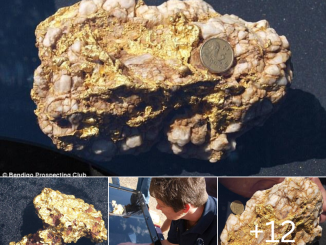Shell rings can help the wearer express their identity, social status or reflect an ancient belief.

Ancient shell fragments in Qafzeh cave. Photo: CNN.
Scientists discovered seashells beneath prehistoric graves in Qafzeh Cave in Israel, near the Mediterranean Sea. Experiments and analysis show that this is one of the oldest pieces of jewelry ever made by humans, according to Daniella Bar-Yosef Mayer, manager of the department of paleontology and molluscan archeology at the Museum of History. Steinhardt Nature of Tel Aviv University. New research published in the journal PLOS ONE on July 8.
First, the team of experts collected shells of the same type as those in Qafzeh cave to conduct experiments. They simulated punctures and wear marks on the specimen using different materials such as sand and leather. Then, they used flax thread to hang them together to keep track.
The research team found that the wear marks on the experimental shells matched those on the original shell fragments in Qafzeh cave. Ancient shell fragments not only have marks of hanging on strings, but also have scratches from rubbing against other shell fragments, meaning they were hung close together.
Bar-Yosef Mayer also discovered loess on four of the five ancient shell fragments the team analyzed. “Loess is a substance that colors many materials and was often used by prehistoric people to paint the body, treat animal skin and other purposes. It is possible that coloring seashells had symbolic meaning.” , she said.
For the wearer, the shell itself can also have greater meaning than just decoration. “They have the ability to express identity, social status or reflect a certain belief,” Bar-Yosef Mayer said.
In addition to Qafzeh Cave, the research team also collected seashells at Misliya Cave located closer to the Mediterranean Sea. They date back 160,000 years and are unperforated and show no traces of human handling. This helps scientists understand more about when the shell ring was born, thereby understanding more about the process of human evolution.


